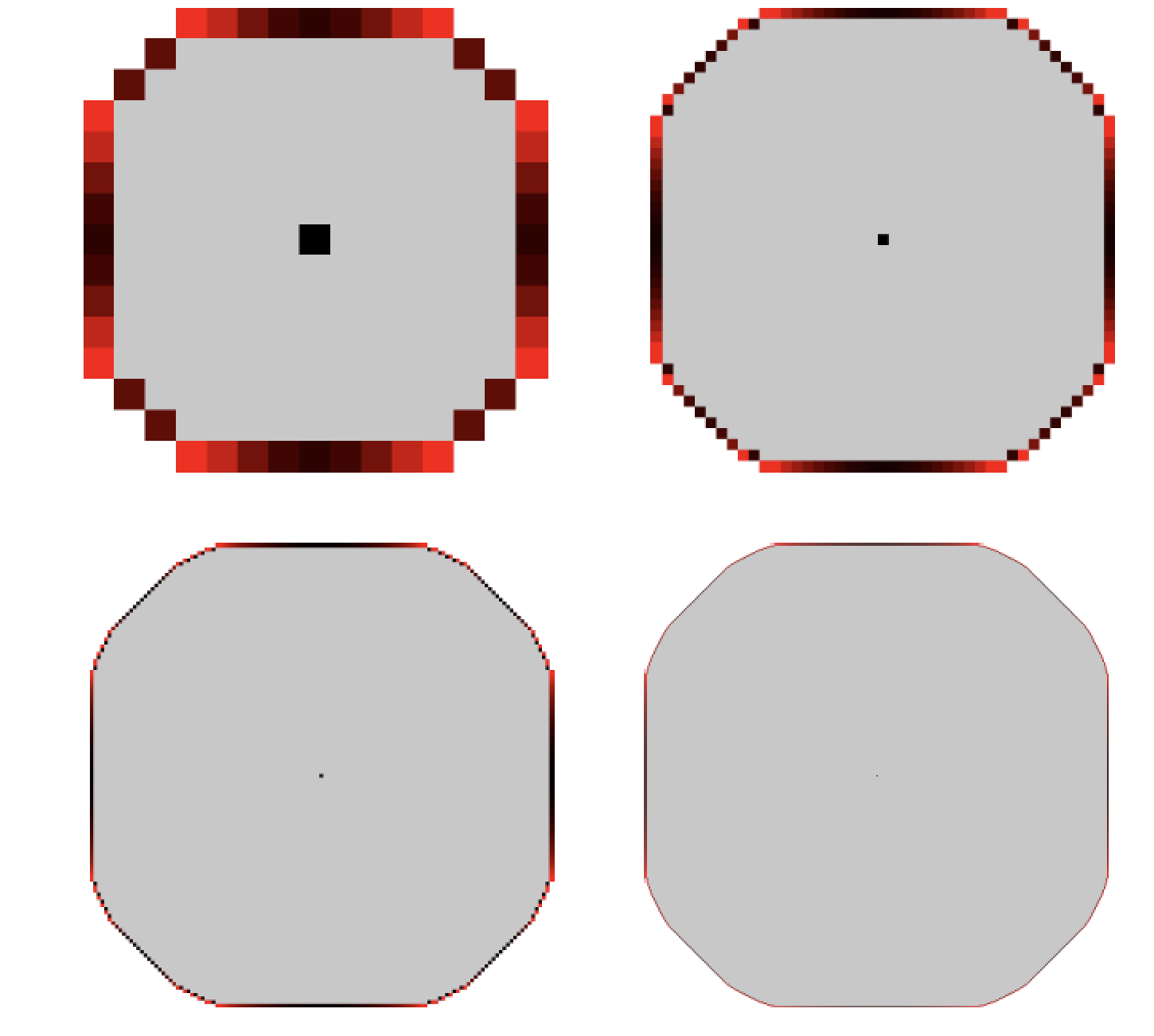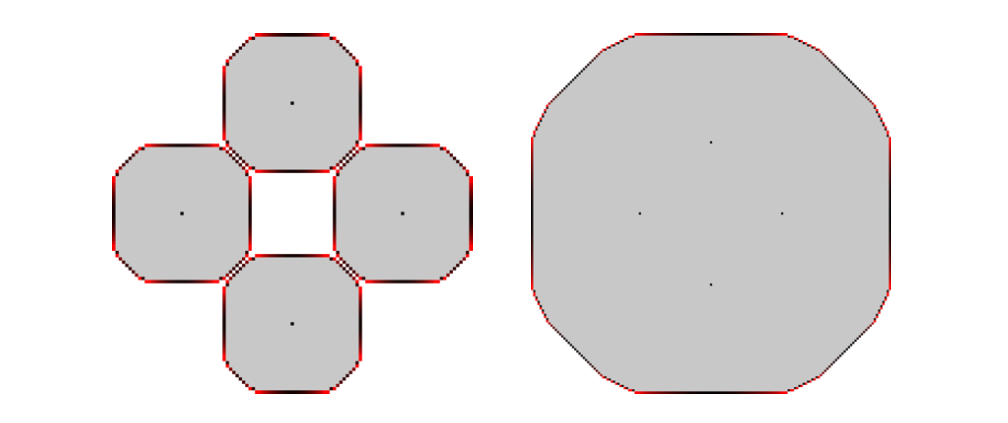Random walks governed by BS
OpenYear of origin: 2017
Posted online: 2018-06-28 19:02:43Z by Henrik Shahgholian97
Cite as: P-180628.4
General Description View the group
Let $\mu_0$ be a given (mass) distribution on $\mathbb Z^d$, i.e. a non-negative function supported on finitely many sites of $\mathbb Z^d$. Fix also a threshold $\kappa_0>0$. For each integer $k\geq 0$ we inductively construct a sequence of sets $V_k$, mass distributions $\mu_k$, and functions $u_k$ as follows. Start with $V_0 = \mathrm{supp} \mu_0$ and $u_0=0$. For an integer time $k\geq 0$ a particular site $x\in \mathbb Z^d$ is called unstable if either of the following holds:
(a) $x\in \partial V_k$ and $\mu_k (x) > \kappa_0$,
(b) $x\in \, \overset{\circ}{V_k}$ and $\mu_k (x) >0$.
Otherwise a site is called stable. We call the number $\kappa_0$ the (boundary) capacity of the model and refer to $V_k$ as the set of visited sites at time $k$.
Any unstable site can topple by distributing all its mass equally among its $2d$ lattice neighbours. More precisely, for each $k\geq 0$ we choose an unstable site $x\in V_k$ and define $V_{k+1} = V_k \cup \{y\in \mathbb Z^d: \ y\sim x \}$, \begin{equation} \tag{1} \mu_{k+1}(y) = \begin{cases} 0, &\text{if $y=x$}, \\ \mu_k(y) + \frac{1}{2d}\mu_k(x) ,&\text{if $ y\sim x $}, \\ \mu_k(y), &\text{otherwise}, \end{cases} \end{equation} and $u_{k+1} (y) = u_k(y) + \mu_k(y) \delta_0(y-x)$, $y\in \mathbb Z^d$, where $\delta_0$ is the Kronecker delta symbol at the origin, i.e. $\delta_0(x)$ equals 1 if $x=0$ and is zero otherwise for $x\in \mathbb Z^d$. We call $u_k$ the odometer function at time $k$. For the sake of convenience, we do allow the toppling to be applied to a stable site, as an identity operator, i.e. if at time $k$ a toppling is applied to a stable site $x$, then we set $V_{k+1}= V_k$, $u_{k+1}=u_k$ and $\mu_{k+1}=\mu_k$. We say that toppling $x$ is legal, if $x$ is unstable. If for some $k$ there are no unstable sites, the process is terminated. We call this model boundary sandpile (BS) and denote by $BS(\mu_0, \kappa_0)$, where $\mu_0$ is the initial distribution, and $\kappa_0$ is the boundary capacity of the model.
It is clear that the triple $(V_k, \mu_k, u_k)_{k=1}^\infty$ may depend on the choice of the unstable sites, i.e. the toppling sequence. Later on we will see that for a suitable class of toppling sequences stable configurations exist and are identical (see Propositions 2.1, 2.3 in [1]). Observe that from the definition of discrete Laplacian and (1) above, we easily see that for each $k\geq 0$ one has \begin{equation} \Delta u_k (x) = \mu_k(x) - \mu_0(x) , \qquad x\in \mathbb Z^d, \end{equation} i.e. the Laplacian of $u_k$ represents the net gain of mass for a site $x$ at time $k$.


Problem's Description
Problem 4.
Are there rules for random walks that can result in BS, both in discrete or in its scaling limit?
The well-known Internal DLA is an example of random walks that results in the so-called Divisible sandpile, as done in the work of L. Levine [3], and Levine-Peres [4].
No solutions added yet
Created at: 2018-06-28 19:02:43Z
No remarks yet